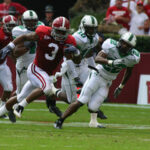One of the most interesting science projects I have ever done with my students during my 20 years as a public and private school teacher was how to overcome dermatillomania – the urge to pick one’s skin.
My students called it: Derma (skin) – till- oh- (you drive me crazy) mania
Interestingly, the idea to use dermatillomania as a science project did not come from any of the girls at our small private school but from Rob, a 17-year-old handsomely build tough guy. When one of the girls asked Rob, “Why do you want to pick dermatillomania as a science project?” Rob answered, “Because dermatillomania is one of the topics many of us deal with but nobody wants to talk about!”
For their science project, my students were not interested in who has dermatillomania, what causes dermatillomania, what kinds of dermatillomania were out there, or what treatment options were available for dermatillomania, they just wanted to overcome it. And so they did!
This is how they managed to successfully overcome dermatillomania:
Find out to what foods your skin reacts.
Rob and Michaela, a 16-year-old girl, volunteered (with parental permission) to be the guinea pigs for my students’ science project. After testing different foods (and having a lot of fun), they discovered that they could produce skin reactions and skin irregularities by eating spicy food, or by eating chocolate or peanut butter that also contained a lot of sugar. By avoiding those two major types of food, both Rob and Michaela saw an improvement in their skin conditions.
Keep your hands away from your face and arms.
Until we used dermatillomania as a science project, Rob and Michaela were not aware of how often their hands were touching their faces, chest, or arms. Once the other students observed and recorded what the two guinea pigs were doing with their hands throughout the school day, it became quickly obvious that once their hands began to touch their faces or arms, there was no stopping.
It also became obvious that the more Rob and Michaela touched their skin, the worse their dermatillomania became. My students also observed and recorded that there was a symmetric pattern to where the skin would break out once either one of the guinea pigs started scratching. If Michaela had a skin irregularity on her right cheek and scratched on it, there was a skin irregularity visible on her left cheek within only a few hours. My students quickly came up with the saying, “touch one – get two”.
Keep something between your hands and your skin.
Being aware that touching one skin irregularity would result in having two helped Rob and Michaela while they were in school. At home, however, there were no other students to yell “touch one – get two”. Rob tried to keep something between his fingers and his skin by using his bicycle gloves – and it worked. The leather feel of the gloves helped Rob to be aware of where his fingers were during the times that he was not busy with his hands otherwise.
Michaela tried gloves but did not like to wear them at any time. Through experimentation, Michaela discovered that she could use a part of her T-shirt, a handkerchief, or even a tissue to keep something between her fingers and her skin whenever she felt the urge to move her fingers close to her face or arms.
Both Rob’s and Michaela’s skin showed visible signs of improvement over the course of one week of not touching their face or arms as frequently as before. The following Monday, however, Rob showed visible signs of having scratched a skin irregularity on his face. His defense “I have to look in the mirror to shave” was rebutted by another student with “Well, the mirror is not your friend!”
Would you pick your skin if you were blind?
All of my older students were stunned when one of my youngest students, a 7-year-old boy, raised the question that would turn out to make all the difference in successfully dealing with dermatillomania. “Would you pick your skin if you were blind?”
There was only one way to find out. When Rob and Michaela spent the next few minutes blindfolded, they had no urge to pick on their skin. Their senses were too occupied trying to understand what was going on around them. Their hands were too busy to feel their way around the school room. There was no time, energy, or urge to pick on their skin.
Based on their experience of being blindfolded and the effect it had on their urge to pick on their skin, Rob, Michaela, and all of the other students (including the younger ones) compiled a list of ‘successful strategies against dermatillomania’ as a conclusion to their science project.
- 1. Avoid spicy foods, sugary chocolate and sugary peanut butter.
- 2. Keep your fingers away from your skin.
- 3. Keep something between your fingers and your skin.
- 4. Keep your eyes away from any skin that you might pick on.
- 5. Stay away from mirrors.
- 6. Stay as far away from a mirror as possible (so you can’t see the details of your skin).
- 7. If you have to look in the mirror to shave or apply make-up, focus only on the task at hand and only spend a few seconds. Don’t look too close or too long.
- 8. Choose your urge.
When my students presented their 8 major ways on how to overcome dermatillomania, I was surprised about number 8, ‘Choose your urge’. Rob and Michaela, both with wonderfully clean skin, only laughed. “Yes, we have a new urge. Now we are addicted to keeping a healthy skin!”
More from Jasmine Thomas:
Back to School: Memorable & Innovative Tips to Help Your Child with Anxiety & Stress
Back to School: Depression in Girls – Tips for the New School Year
Back to School: Beware of Trichotillomania – The Habit to Pull Out Hair





